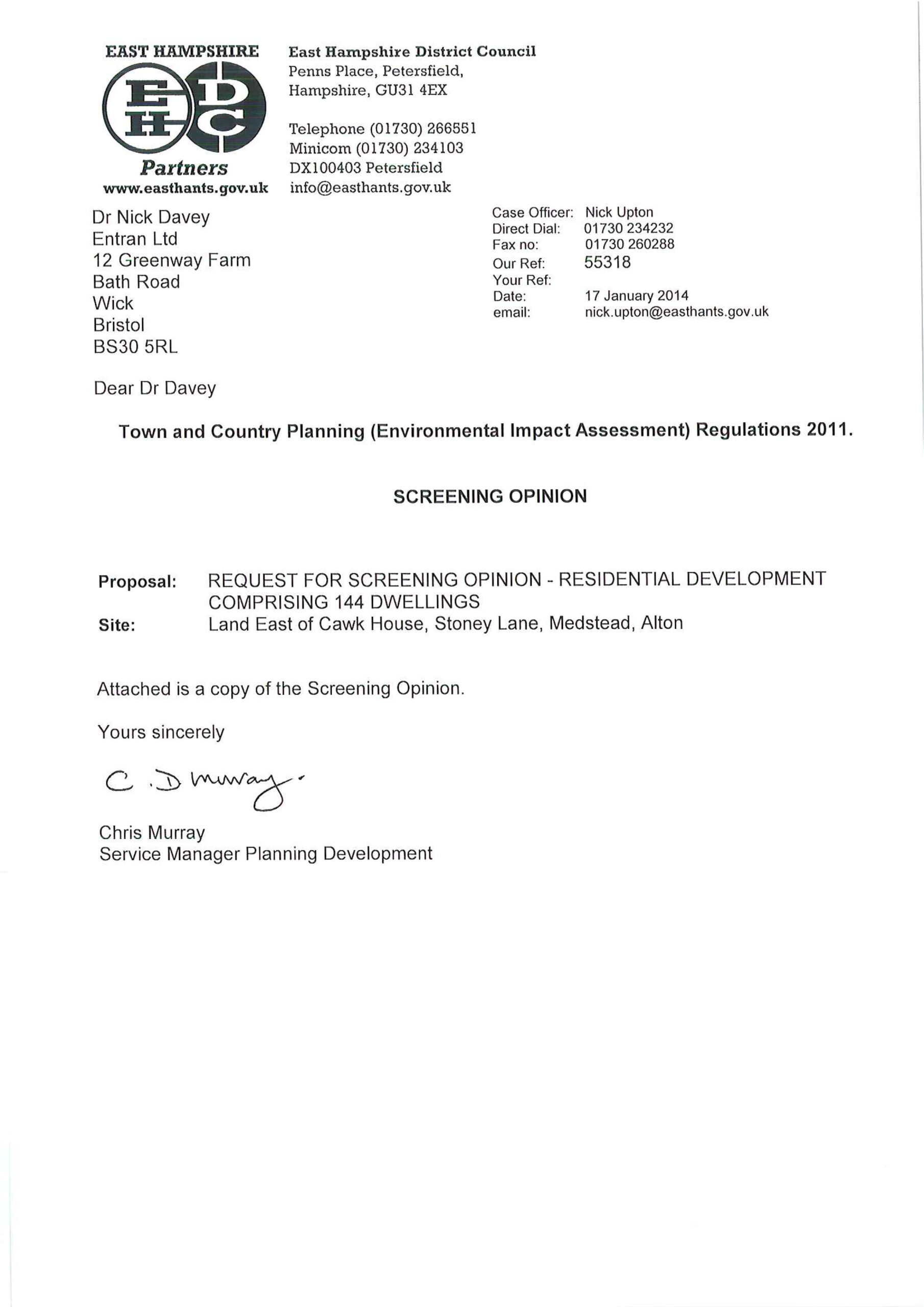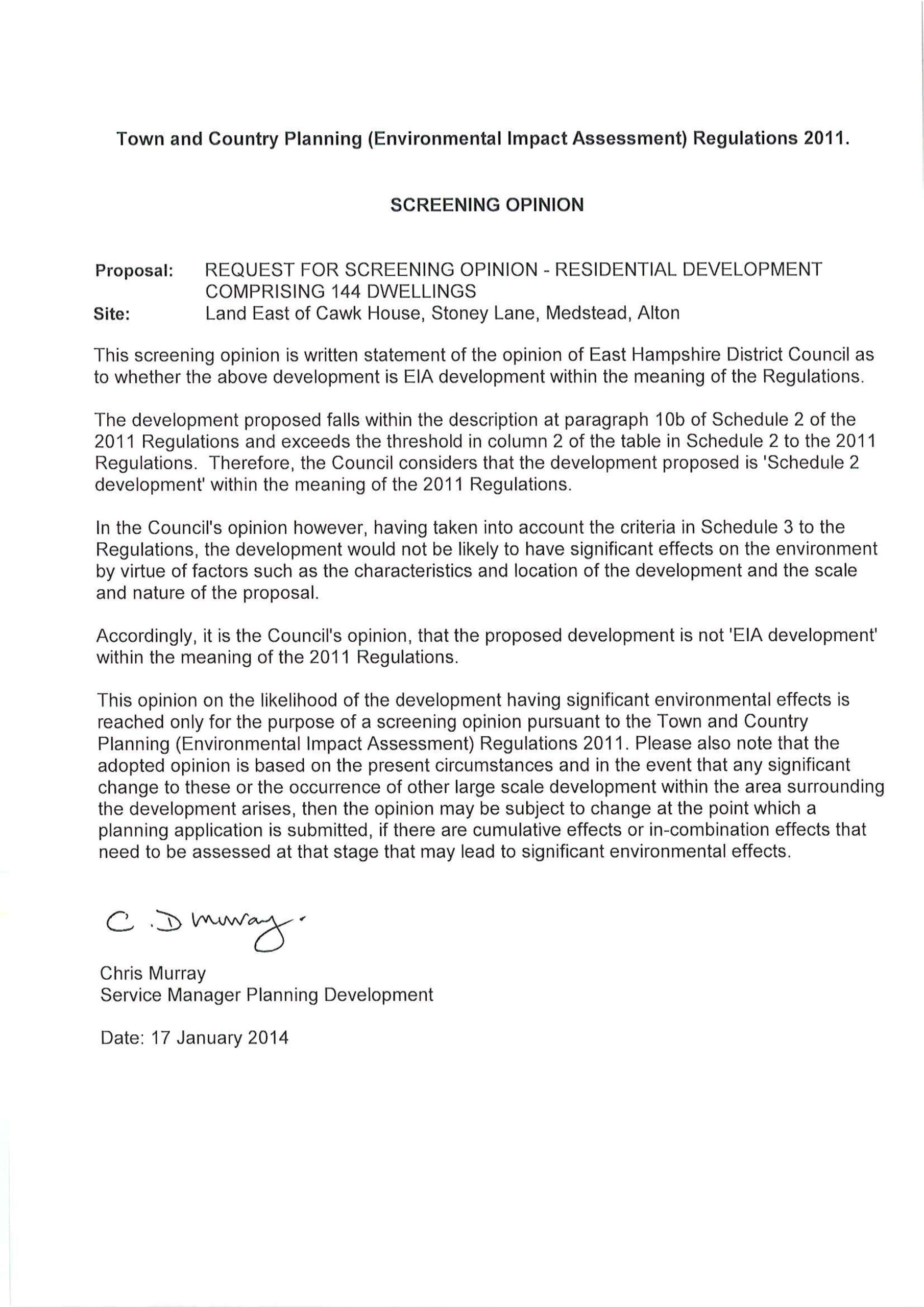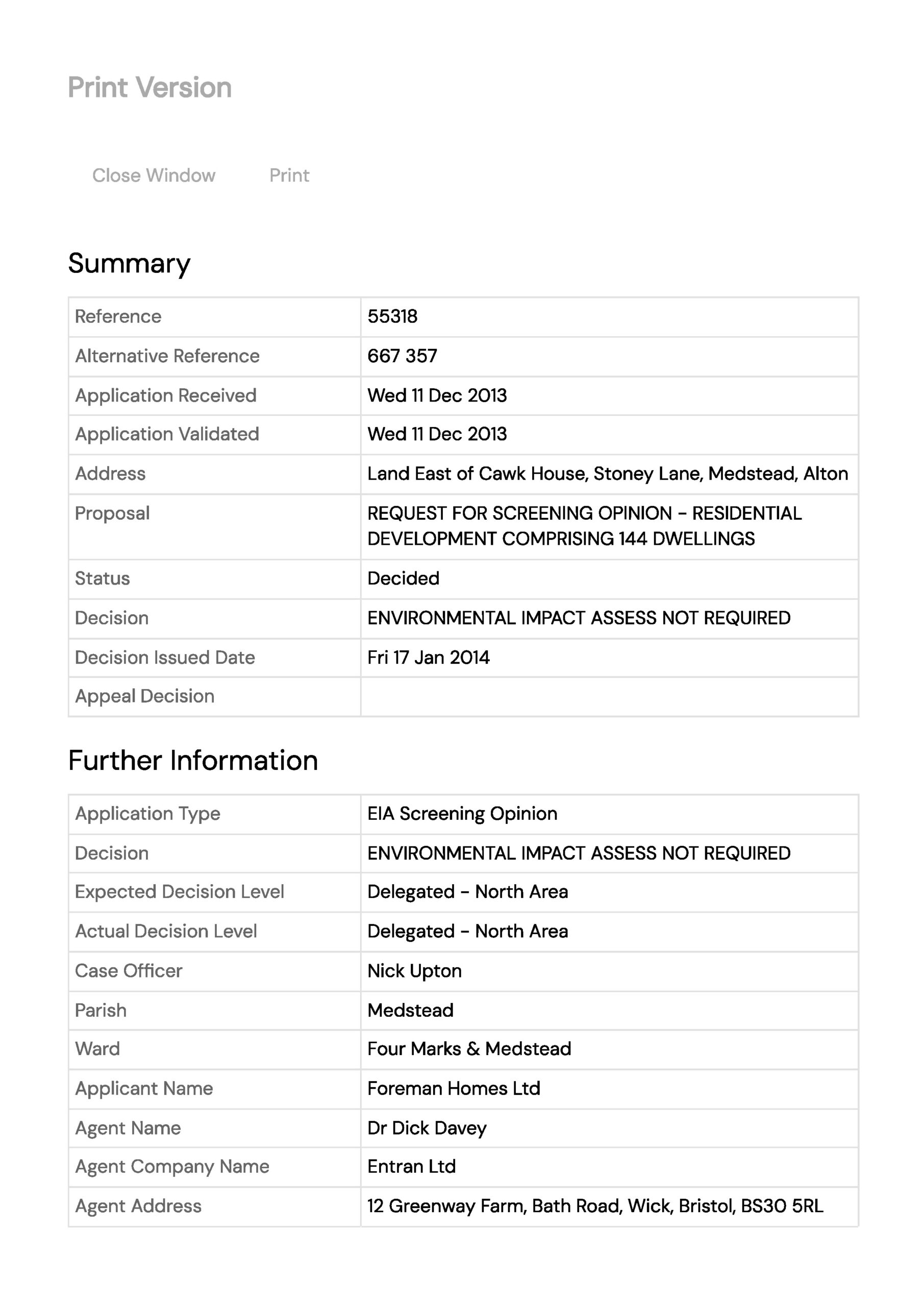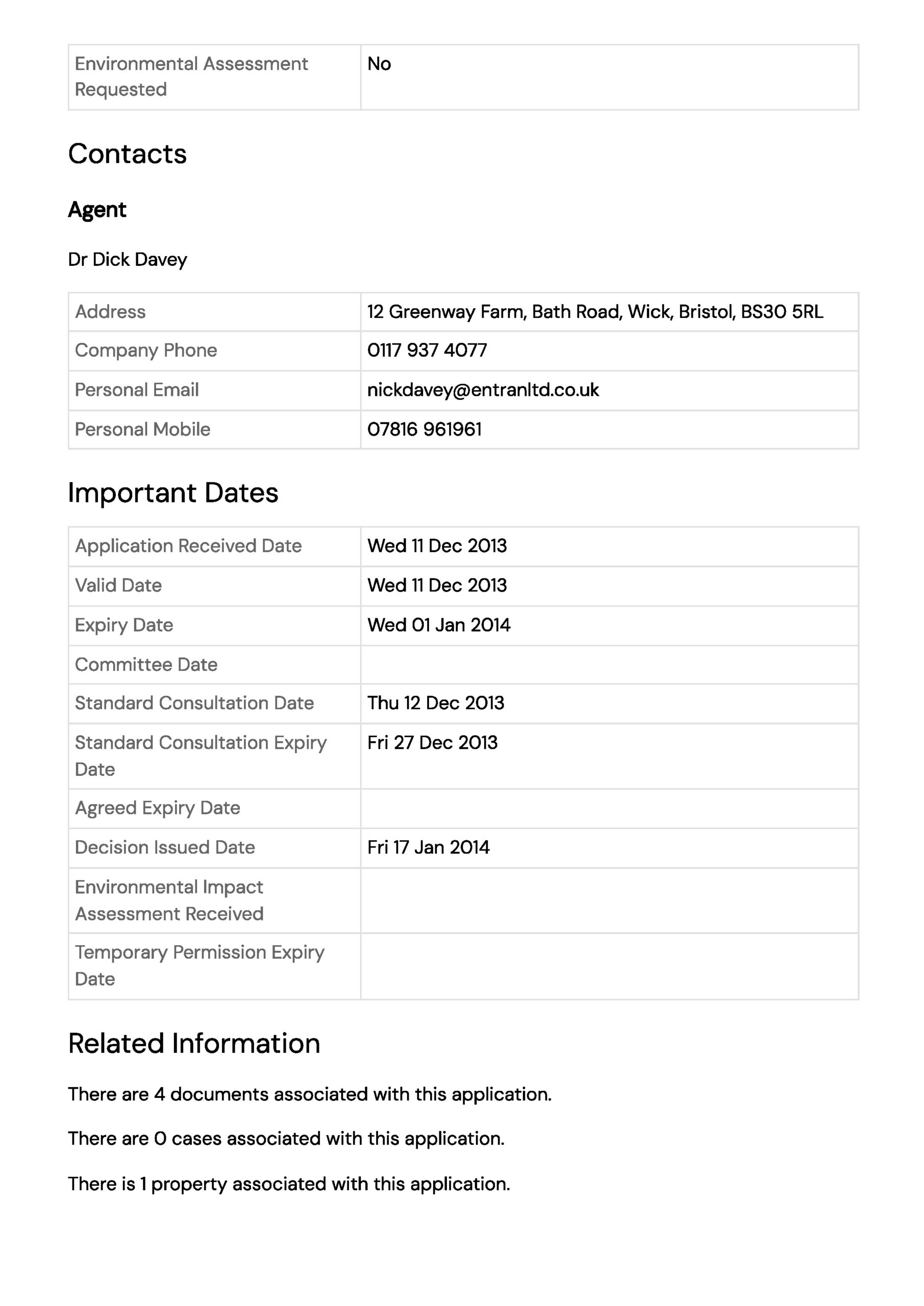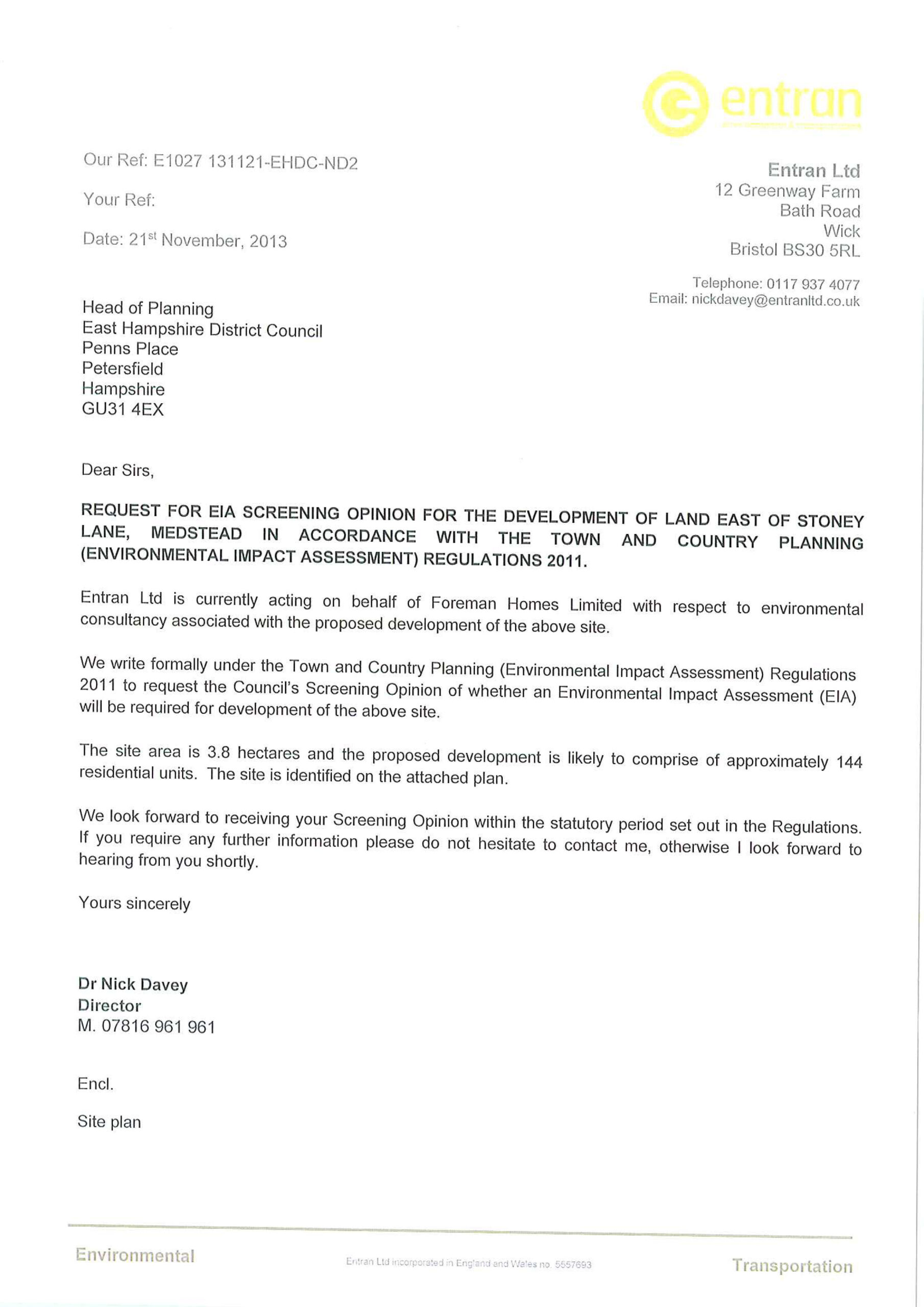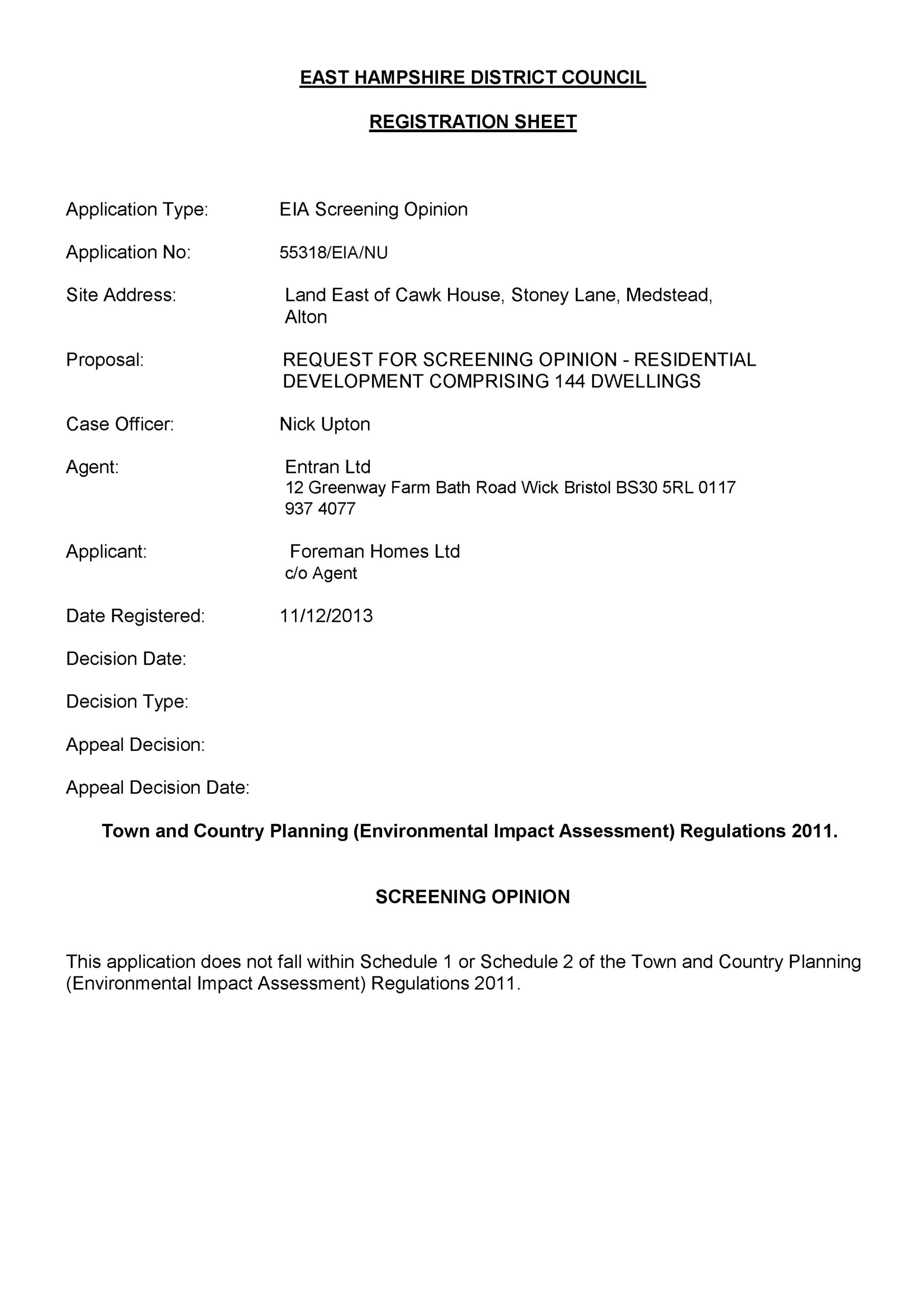⚖️ Summary: 2014 EIA Screening – Foreman Homes, 144 dwellings
✅ EHDC determination:
EIA was not required, even though:
- The site was 3.8 ha
- The proposal exceeded the 0.5 ha threshold in Schedule 2, 10(b)
- It involved 144 dwellings, just under the indicative 150-unit threshold
📌 EHDC explicitly stated the scheme was Schedule 2 development but not EIA development because:
“…not likely to have significant effects on the environment by virtue of factors such as the characteristics and location of the development and the scale and nature of the proposal.”
🧠 Key Observations:
1. ✔️ Properly classified as Schedule 2
They didn’t ignore the legal threshold — EHDC acknowledged that both site area and dwelling count triggered Schedule 2 status.
2. ❗ Dismissed significant effects despite cumulative risk
Like the Bargate case, this screening decision did not find “likely significant effects”, and it did not reference cumulative development pressure in any meaningful way — despite:
- 144 dwellings being objectively large for a rural village
- Previous developments already adding pressure
- Parish and County Highways officers raising infrastructure concerns
3. ⚠️ Highways comments confirm cumulative concern
Hampshire Highways accepted no EIA for highways specifically, but required:
A full Transport Assessment to evaluate the impact on the local highway network.
They didn’t object — but their neutrality doesn’t imply no environmental significance overall.
4. 🟥 Inconsistency with later positions
We now have:
- A history of large-scale growth in Medstead (Bargate, Foreman Homes, etc.)
- A pattern where EHDC repeatedly chose not to require full EIA
- Minimal cumulative logic applied each time — even as the thresholds were approached or exceeded
This builds a legal and factual basis to say:
EHDC’s approach to EIA screening has systematically ignored cumulative impact, especially in village-scale settings, despite mounting pressure and proximity to known environmental constraints (woodland, PROW, flood concerns, etc.).
📌 Final Legal Insight:
The 2014 screening for Foreman Homes was procedurally compliant under the 2011 EIA Regulations but arguably substantively flawed, just like the Bargate case.
Both show:
- Failure to apply Schedule 3 cumulative assessment robustly
- Over-reliance on narrow thresholds
- Dismissal of rural pressure as “not significant”, despite large-scale transformation
⏳ Under UK law (Regulation 9(2) of the EIA Regulations 2017):
An EIA screening opinion expires after 3 years from the date it was issued, unless:
- A planning application has been submitted, and
- Substantive work has started on the development.
❗ Is it realistic to put 144 dwellings on 3.8 ha next to bungalows in a rural village?
🚩 No — not without significant visual, landscape, infrastructure, and social impact — all of which should have triggered red flags in both:
- The EIA screening process, and
- The planning decision itself.
🧠 Key Concerns:
🟧 1. Density is disproportionately high
- Village settings in East Hampshire typically support 25–35 dph (dwellings per hectare)
- 72 dph is closer to urban infill levels
- Squeezing this in next to bungalows creates urbanising impact → a Schedule 3 trigger under EIA Regs
🟨 2. Contextual harm
- The juxtaposition between 2-storey estates and low-density rural homes can cause:
- Overbearing visual effects
- Drainage mismatch
- Social infrastructure overload (e.g. GPs, roads, schools)
- These are precisely the kinds of effects the EIA process is meant to flag
🟥 3. Cumulative effects
- The two sites are close in both time and space
- EHDC should have considered the combined visual and infrastructure pressure
- Failing to link them in screening opinions is arguably irrational and legally unsafe
⚖️ In legal/technical terms:
This level of intensification in a village location very likely should have been considered “likely to have significant environmental effects”, particularly when factoring in:
- Landscape character
- Cumulative housing growth
- Infrastructure capacity
- Settlement hierarchy (Medstead ≠ urban hub)

